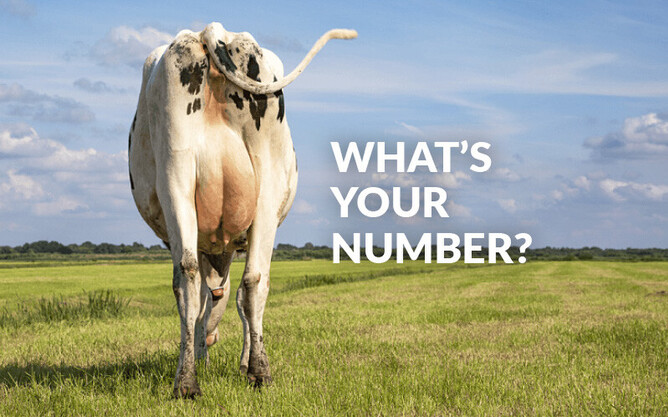A well-managed mating is an area that can result in improvements in farm efficiency – a hot topic at the moment.
Achieving more days in milk from each cow by getting them in-calf earlier in the repro season and reducing empty rates, with the flow-on effect of reducing replacement rates, are just two of the ways that mating can create signification gains in efficiency.
Reproductive success requires a year-round focus but, with mating imminent, it’s now time to ensure that your hard work pays off and you hit repro targets.
Aim for these numbers:
>75% cycling 10 days before planned start of mating (PSM);
At least 4.3% being submitted each day;
A good conception rate of 55-60%;
A 3-week submission rate of 90%.
It can be difficult to directly alter conception rates, as many of the factors that affect this are unable to be controlled, or are only able to be manipulated indirectly. However, we are able to control submission rates.
The industry target is to have a 3-week submission rate of more than 90% to achieve a good 6-week in-calf rate of 78% or more. This means mating almost every cow within the first three weeks.
To be on track to reach this, you need to be submitting at least 4.3% of the herd for insemination every day. Work out how many cows this means for you and make sure you’re meeting your daily target. To achieve these numbers, ideally you need all cows to be cycling within this period.
If you have an issue with non-cyclers, they need to be identified and treated before PSM to be cycling again in time for this window. Unfortunately, you can't always tell until close to repro season how successful you have been at getting your cows in good condition to start cycling again after calving. Heat detecting for at least four weeks prior to mating is the simplest way to identify if you have non-cycling cows.
Many farms now have rumination technology (cow collars or ear tags) to do the heat detecting for them. This makes detection and treatment of non-cyclers prior to PSM a breeze – press a button and draft all cows >35 days calved that haven’t yet had a heat! For those still doing the hard yards without tech, physical heat detection aids (tail paint or scratchies) are still great methods for finding non-cyclers.
Firstly, tail paint the whole herd with one colour, preferably 35 days before PSM. Check cows for rubbed tail paint and record their heats at least twice weekly, then re-paint those cows with a second ‘cycled’ colour for best visual identification.
After 25 days of heat detecting, the cows who haven’t been rubbed and are still your original colour will form your non-cycler group (excluding cows that are <35 days calved). To minimise the negative effect that these non-cycling cows will have on your in-calf rates, it’s best to intervene to get them cycling and inseminated within the first weeks of mating.
Once you are 10 days out from your PSM, you can calculate your ‘pre-mating cycling rate’ – the percentage of cows in your herd that have shown a heat during this detection stage. The target is at least 75%. If your rate is less than that, you either have a high level of non-cyclers who, if left untreated, will negatively impact your in-calf rates, or, your system for heat detection was not effective.
Treating non-cyclers is only profitable with early intervention, so ensure this treatment starts 10 days before your PSM for best return on investment. Early treatment will make a big difference to the reproductive outcomes for these cows.
There are also other interventions that can increase the submission rate of your herd and improve your overall calving pattern and reproductive efficiency, such as 'Why Wait' PG injections, to prompt all cows to have a heat at the start of mating, and heifer synchrony programmes.
Book a repro consult with your KeyVet to make a plan for your farm ahead of mating. Good mating begins with good management!

